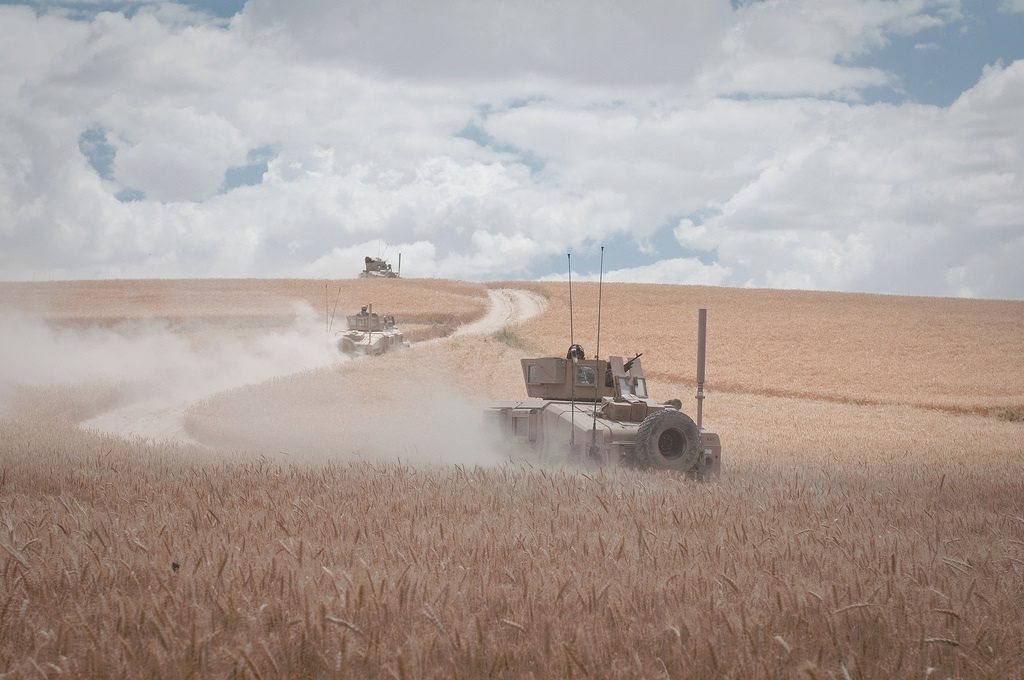 Photo Credit: Flickr Resolute Support
Photo Credit: Flickr Resolute Support
The Future of Food Security in Afghanistan
Climate change will not be kind to South Asia. Numerous studies show India and Bangladesh’s vulnerability to changes in sea levels and monsoons. Yet, Afghanistan is largely avoided. How does a country plagued with instability plan for climate change? In this two part series, I’ll discuss the challenge of governance and food security in Afghanistan and the impact of opium on achieving either.
Threats to Food Security in Afghanistan
Food security is commonly broken down into three factors; availability, accessibility, and utilization. Availability refers to the “supply side;” food production and stock. Accessibility refers to income and prices needed to access food. Utilization is about the nutritional intake and food preparation. Stability and consistency of the three components is critical for people to ensure food security. Afghanistan lacks consistency in all three areas, making it one of the most food insecure places in the world. The risk of food insecurity is exacerbated by two key variables; the ongoing conflict and the increasingly arid environment. The long term survival of the country will be determined by how these variables change.
Afghanistan has suffered almost constant intrastate armed conflict. The country saw multiple military coups in 1973 and 1978, and subsequent takeover by the Taliban from 1996-2001. Instability continued as the Taliban fought to regain control and the Afghan government floundered after the toppling of the Taliban in 2001 and installation of a democratic system by the U.S. coalition. The U.S. has about 15,000 troops in Afghanistan; attempting to build the stability, by training Afghan troops and targeting both Taliban and Al-Qaida holdouts. Yet, after over a decade and a half of war, the country remains unstable. The lack of stable governance means the population suffers from both lack of availability and access.
Beyond instability, Afghanistan is also a primarily arid environment. Naturally dry and warm, the country is made up of mostly rugged mountains with plains in the north and southwest. Land suitable for farming makes up about 20% of the country while almost 80% is permanent pasture. The environment makes cultivating crops difficult as both droughts and floods are common. Yet, almost 85% of the population is dependent on agriculture for a living. Some of the main products include wheat, sheep products, fruits and nuts, and, of course, opium.
Wheat is particularly significant staple crop; making up over 50% of their diet and large percentage of agriculture. While Afghanistan relies primarily on domestic wheat production, imports have started to make up a larger percentage of total supply as demand grows. Today, families spend over 60% of their budget on food, making them vulnerable to food price shocks.
Climate change will add to the strain on Afghanistan’s agricultural sector. Climate models suggest that the country will become drier, with temperatures rising up to 4 degrees Celsius by 2060, and see increased frequency of extreme weather, both droughts and floods. This will lead to increased soil erosion and reduced water supply, which could cause increased crop failure and livestock starvation. Each year of subsequent drought will make it increasingly difficult for communities to bounce back.
Opportunities to Bolster Food and Human Security
There are a number of steps that Afghanistan must take if it wants to avoid further environmental and agricultural collapse. First and foremost, the country needs governance beyond Kabul. Food security will remain unattainable if the instability continues, but achieving stability will not be easy. Deeply rooted corruption, ethnic tensions, and the Taliban continue to undermine any hope at a strong government. Second, the country must implement water management policies. As the already limited water disappears, management will be critical to maintain reliable sources. Third, due to climate change and predicted impacts on wheat and other crops, the country should promote the cultivation of more drought resilient crops.
Afghanistan has a long way to go to achieve food security and climate change will only hinder that process. The country must address its governance and stability today. Without stability, any efforts at food security will be fruitless.
The next blog will address the concern that farmers may turn to crops such as opium if wheat and other crops start to collapse. Alternatives should be promoted to avoid further production of the illicit crop.





